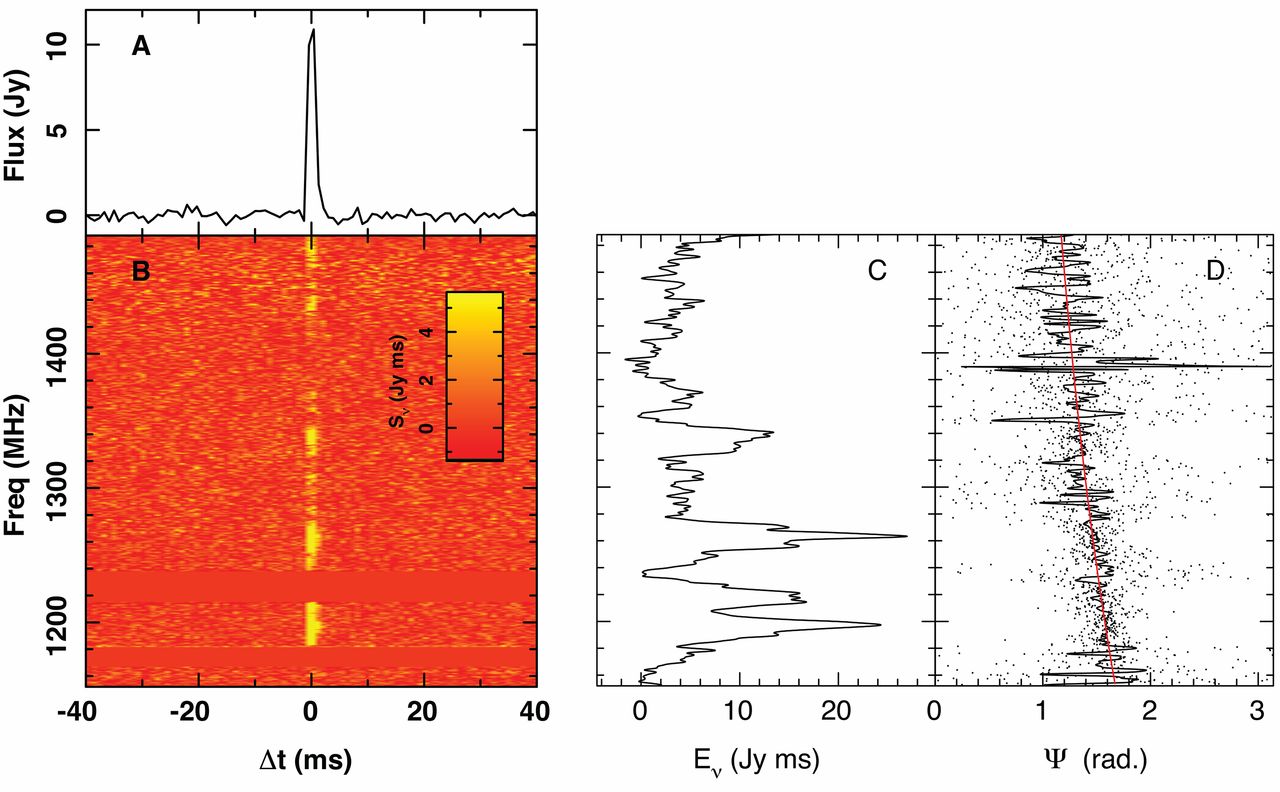After trying to trace fast radio bursts (FRBs) back to their sources for years, for the first time, scientists have managed to track a mysterious fast radio burst to its origin, a galaxy far away.
Scientists detected the source of a mysterious fast radio burst, which originates from a galaxy located 3.6 billion light-years away from Earth. Fast radio bursts are short-lasting radio signal flashes that occur rapidly and are incredibly hard to track. Scientists still don’t know why they occur. While these bursts aren’t a rare occasion, they are incredibly hard to track, and this is the first time they have managed to track one of them back home to its source.
Many people attribute these fast radio bursts to alien life, although scientists believe they could have come from anywhere, from a star to an entire galaxy or a black hole. Nevertheless, the possibility of some kind of alien civilization being the culprit behind the mysterious fast radio bursts is not ruled out by Breakthrough Listen, a scientific organization that studies this phenomenon.
Scientists managed to source a repeating fast radio burst in 2017, but these radio bursts rarely repeat. The recent mysterious fast radio burst called FRB 180924 was caught by the Australian Square Kilometre Array Pathfinder radio telescope, also known as ASKAP, in Western Australia. The findings were published in the journal Science.
Fast radio bursts were first discovered in 2007, and since then astronomers have been on the hunt to discover more of them and learn more about them. So far, scientists have discovered 85 of the bursts, some of which are repeating radio bursts.
“This is the big breakthrough that the field has been waiting for since astronomers discovered fast radio bursts,” Keith Bannister, lead study author and principal research engineer at CSIRO, Australia’s national science agency said in a statement.
Bernester’s team developed a new method to track the bursts that are normally incredibly difficult to track. His team froze and saved data collected by the telescope, in less than a second after it detected the burst. They used the data to create a map which would pinpoint its origin, tracking it to a galaxy far away, about the size of our own.
“If we were to stand on the Moon and look down at the Earth with this precision, we would be able to tell not only which city the burst came from, but which postcode — and even which city block,” Bannister said.
It’s worth noting that the newly-discovered mysterious fast radio burst is fairly different compared to the one detected in 2017. While the repeating burst originated from a smaller galaxy which is a star nursery, the new burst belongs to a large galaxy which has a low rate of star creation. Scientists still don’t know what causes FRBs, but this study sheds light on where they come from, and it’s a huge step toward discovering what causes them.
“This suggests that fast radio bursts can be produced in a variety of environments, or that seemingly one-off bursts detected so far by ASKAP are generated by a different mechanism to the repeater,” Deller said.





